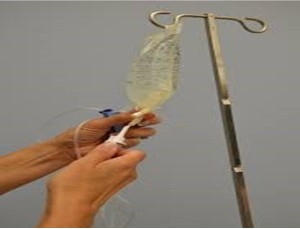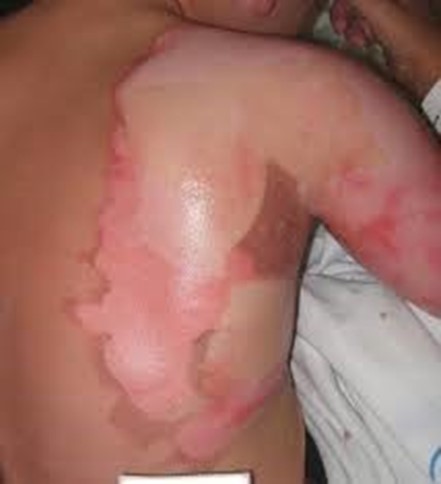A nurse is preparing to administer 2 units of packed RBCs to a client.
Which of the following actions should the nurse take?
Transfuse each unit of blood over 5 hr.
Change the IV tubing after each unit of blood is transfused.
Prime the tubing with 0.9% sodium chloride.
Administer the blood through a 22-gauge intravenous catheter.
The Correct Answer is C

When administering packed RBCs, the tubing should be primed with 0.9% sodium chloride.
Transfusing each unit of blood over 5 hours (choice A) is not recommended as it may increase the risk of bacterial growth.
Packed RBCs should be transfused over 2 to 3 hours.
Changing the IV tubing after each unit of blood is transfused (choice B) is not necessary.
Administering the blood through a 22-gauge intravenous catheter (choice D) may not be appropriate as a larger gauge catheter is typically used for blood transfusions.
Nursing Test Bank
Naxlex Comprehensive Predictor Exams
Related Questions
Correct Answer is B
Explanation

A full-thickness burn injury can result in fluid loss and low blood volume (hypovolemia), which can lead to hypotension.
Choice A, Urinary diuresis, is not the correct answer because it refers to increased production of urine and is not a common symptom of a full-thickness burn injury.
Choice C, Decreased respiratory rate, is not the correct answer because it refers to a decrease in the number of breaths per minute and is not a common symptom of a full-thickness burn injury.
Choice D, Bradycardia, is not the correct answer because it refers to a slow heart rate and is not a common symptom of a full-thickness burn injury.
Correct Answer is B
Explanation
“Monitor urinary output for retention.” Urinary retention is a common side effect of opioid use and should be monitored.
Choice A is not correct because itching can be a side effect of opioids and does not necessarily indicate an allergic reaction.
Choice C is not correct because restricting fluid intake can worsen constipation.
Choice D is not correct because antiemetics may be prescribed to manage nausea and vomiting, which are common side effects of opioids.
Whether you are a student looking to ace your exams or a practicing nurse seeking to enhance your expertise , our nursing education contents will empower you with the confidence and competence to make a difference in the lives of patients and become a respected leader in the healthcare field.
Visit Naxlex, invest in your future and unlock endless possibilities with our unparalleled nursing education contents today
Report Wrong Answer on the Current Question
Do you disagree with the answer? If yes, what is your expected answer? Explain.
Kindly be descriptive with the issue you are facing.
